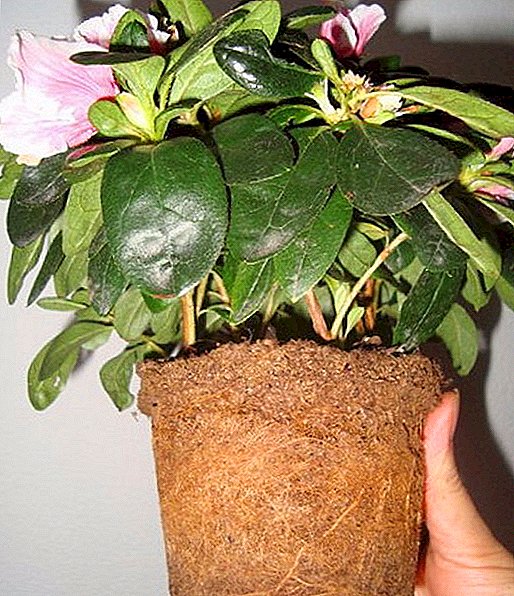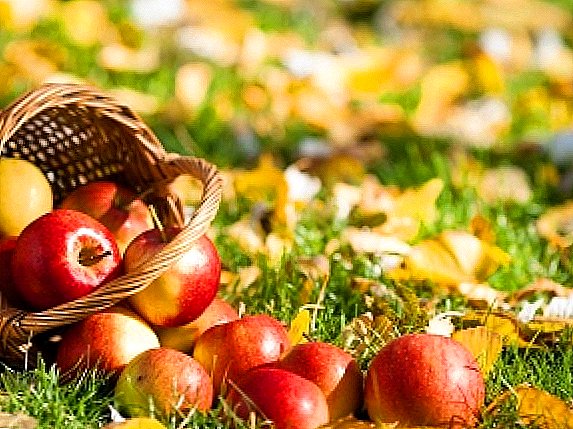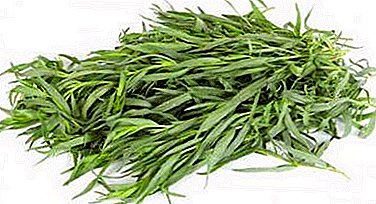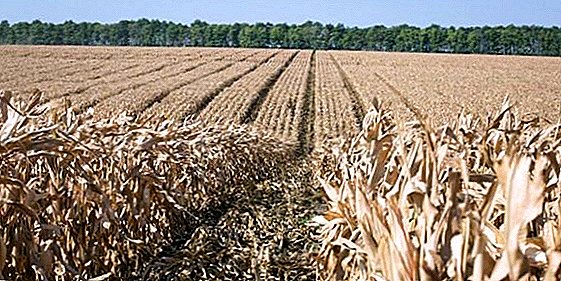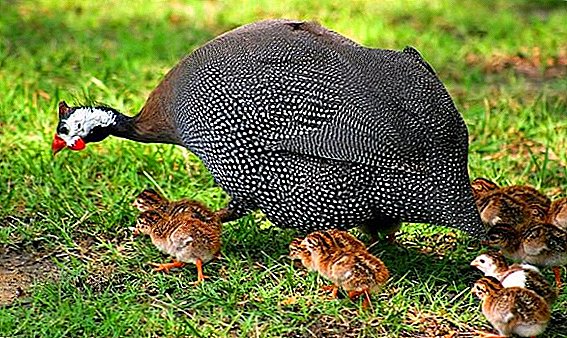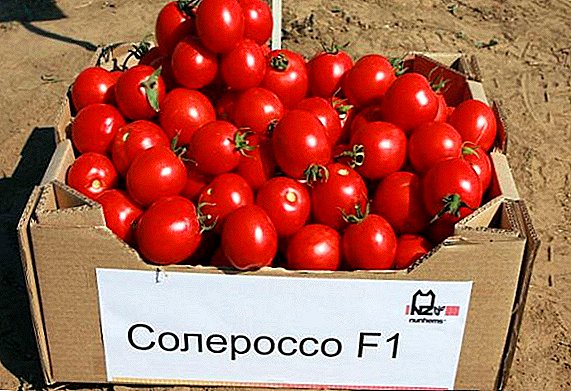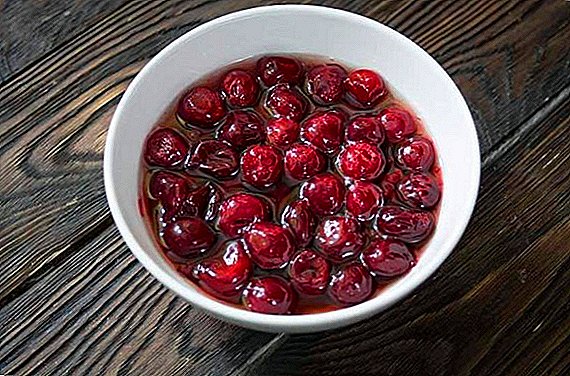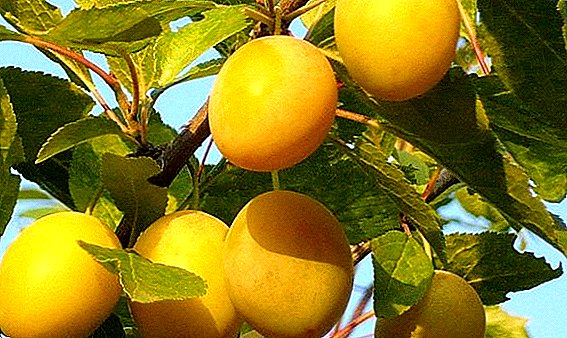 No wonder plum is considered one of the most popular "residents" of the garden. It is relatively unpretentious in the care and gives a fairly large number of sweet and juicy fruits, which are so fond of adults and children. Today, there are many varieties of plums, and the Morning variety is not the last in terms of popularity; planting and caring for them will be the main object of attention in this article.
No wonder plum is considered one of the most popular "residents" of the garden. It is relatively unpretentious in the care and gives a fairly large number of sweet and juicy fruits, which are so fond of adults and children. Today, there are many varieties of plums, and the Morning variety is not the last in terms of popularity; planting and caring for them will be the main object of attention in this article.
History of plum "Morning"
Starting the description of any variety, first of all, it will be useful to get acquainted with the history of its appearance. Thus, the Morning Plum is associated with the names of such scholars as V.S. Simonov, S.N. Satarova, and H.K. Yenikeev, who worked at the All-Russian Breeding and Technological Institute for Horticulture and Nursery. Thanks to their research, by crossing the varieties "Rapid Red" and "Renclod Ulens" they managed to get a new variety of plums, which successfully combined all the advantages of "parents". In 2001, the grade "Morning" got into the State Register, and it was recommended for planting in the Central region of Russia. 
Characteristic plum "Morning"
In the description of plum varieties "Morning" can be divided into two important points: the characteristics of the tree itself and its separate fruits.
Tree description
Outwardly, this tree is not much different from other varieties. It is medium-sized (up to a maximum of three meters in height), has a spherical, slightly elevated crown, on the branches of which there are few leaves. The leaf plates are wrinkled, thick, light green colored and elliptical in shape. Dark brown shoots are smooth, thick and straight. Flowers begin to appear on the twigs around May 12-20 (by the beginning of June, the Morning plum is already in full bloom), and the fruiting of the tree falls on the 4-5th years after planting.
Plum "Morning" does not tolerate frost, which are primarily affected flower buds, which adversely affects the yield.
Fruit Description
 Like the tree itself, its oval fruits are of medium size and weigh about 25-30 g, although the largest specimens can reach a mass of 40 g. They are distinguished by a green-yellow color and a characteristic wax coating, moreover, for those fruits that were on the sun On the side, a pinkish blush appears very quickly.
Like the tree itself, its oval fruits are of medium size and weigh about 25-30 g, although the largest specimens can reach a mass of 40 g. They are distinguished by a green-yellow color and a characteristic wax coating, moreover, for those fruits that were on the sun On the side, a pinkish blush appears very quickly.
The flesh is juicy, yellow, fine-fibrous and very fragrant, and such plums taste sweet and sour (if you evaluate the overall taste qualities of the Morning variety, they deserve a solid "4"). Stone is well separated from the pulp. Fruit ripening occurs in the first half of August, and if necessary, you can immediately transport them without fear of being salable.
Pros and cons varieties
Plum "Morning" has a lot of advantages, and one of them is early ripening and high, stable yields (on average, up to 15 kg of fruit can be harvested from one tree). Also, it should be noted its unpretentiousness in terms of care, self-fertility and good quality fruits. Due to the fact that this plum is self-fertile, you do not have to think long about which varieties to plant next.
Did you know? When growing a crop, there is a crop failure every fourth year.The only disadvantages of plum varieties "Morning" gardeners include the average level of resistance to diseases and pests, as well as low winter hardiness. Although it is impossible not to recognize the fact that the tree quickly recovers from damage.
Dates and choice of place for landing
 Despite the claims of many gardeners that the “Morning” plum planting can be done both in spring and in autumn, it is better for residents of the middle lane to wait until the ground warms up well after winter frosts and the frosts recede completely. Early spring is considered the most favorable time for planting plum seedlings of the described variety. The gardener needs only to choose in advance a place that would be well lit by the sun's rays and not submerged by groundwater (it is better if they are located at least 1.5 meters from the soil surface). If in the morning or in the evening the shadow falls on the selected area, then it is not terrible and will not affect the yield in any way.
Despite the claims of many gardeners that the “Morning” plum planting can be done both in spring and in autumn, it is better for residents of the middle lane to wait until the ground warms up well after winter frosts and the frosts recede completely. Early spring is considered the most favorable time for planting plum seedlings of the described variety. The gardener needs only to choose in advance a place that would be well lit by the sun's rays and not submerged by groundwater (it is better if they are located at least 1.5 meters from the soil surface). If in the morning or in the evening the shadow falls on the selected area, then it is not terrible and will not affect the yield in any way.
Important! Planting pits are dug up in the fall or a few weeks before the intended planting. In depth they should not be less than 60 cm with a diameter of 60-70 cm. The soil dug out of the pit should be mixed with the humus in a 2: 1 ratio, after which the mixture is again placed in the pit.
The process and scheme of planting seedlings plum "Morning"
 After you prepare the pit, it remains to hammer a wooden peg into its center and tie a seedling to it, located on the north side of the stake. It is important to bury the plum sapling so that its root neck (the place where the roots end and the trunk begins) is located 5-7 cm above the ground surface. Also, do not forget to gently spread them out, placing them evenly over the entire area of the pit.
After you prepare the pit, it remains to hammer a wooden peg into its center and tie a seedling to it, located on the north side of the stake. It is important to bury the plum sapling so that its root neck (the place where the roots end and the trunk begins) is located 5-7 cm above the ground surface. Also, do not forget to gently spread them out, placing them evenly over the entire area of the pit.
It is necessary to leave a distance of at least 15 cm between the trunk of the seedling and the driven stake, and the binding of the seedling is performed every 30 cm using soft twine (wire or other hard materials can damage the tender bark of the young tree).
After that, you can begin to fill the roots with earth (without fertilizers), slightly tamping the soil with your hands as you add it. There should be no voids around the roots. Too deep planting often leads to the maturation of the bark and the oppression of the tree itself, which means that it will no longer be necessary to wait for an abundant harvest.
A tree planted in such a way should be poured abundantly and mulched with a layer of peat or compost.
Important! Do not add strong fertilizer to the pit. Because at best they will simply stimulate the growth of shoots to the detriment of the fruit, and at worst they will burn the roots.
Nuances of seasonal care for plums "Morning"
Like other varieties of plums, "Morning" can not be called too capricious. All that is required for such a tree is regular watering, periodic fertilization and the obligatory pruning of the crown, which will relieve it of the need to waste forces on sick or dry shoots.
Regular watering
 All plum trees need regular watering, which is especially important during dry periods.
All plum trees need regular watering, which is especially important during dry periods.
It is therefore not surprising that the morning tree, which has not yet reached a height of two meters, consumes at least 2-4 buckets of water per week. If the height of the seedling has exceeded two meters, then it will be already about 5-6 buckets of water.
Fertilization
Having landed the Morning plum in my plot, you need to know about the mode of fertilizer application when it is further grown. For the first two or three years, all trees actively use fertilizers that were applied to the ground during planting. In the future, mineral fertilizers and organic matter will need to be added to the near-stem circle. In addition, the land in this area should be periodically loosened, simultaneously destroying weed grass.
Plum varieties "Morning" positively responds to dressingtherefore, in early spring and after flowering of the tree, nitrogen-containing fertilizers are introduced into the soil (they contribute to the active growth of the plant), and starting from the second half of the growing season they are replaced by nitrogen-potash and phosphorus-potassium, which are used for the accumulation of nutrients. With the arrival of autumn, organic matter is put under digging and phosphorus-potash fertilizers are used.

The most affordable fertilizer for Morning plum is manure, but not fresh (it should be “processed” on the fire beforehand). At 15 kg add 0.5 kg of double superphosphate, 1 kg of ordinary, 100 g of potassium chloride or 1 kg of wood ash.
Did you know? Experienced gardeners are advised to fertilize plums with urea annually at the rate of 20 g per 1 m².
Trimming rules
An important procedure is pruning plums. So, when forming the crown of the Morning variety, it is necessary to remove dried or frozen branches, as well as those that grow inwards and interfere with other shoots. You should also with due attention to the removal of basal shoots. It can appear in a fairly large number, often growing around the bush within a radius of 3 m. It is removed 4-5 times over the summer, which saves the mother plant from the extra waste of forces that are sent to increase yields.
For a better fight against this growth, it is necessary to carefully excavate the top layer of soil, down to the place where the root process moves away from the root system of the tree, and separate it from the main root. Such a procedure will significantly slow down the formation of root growth.  When pruning a plum, it is important to take into account two main points: the growth form that you want to give to the tree, and the reduction of the risk of contracting plum diseases (for example, white rot or gumming). To protect their plums from such diseases, gardeners resort to spring pruning, performing it much earlier than leafing or already with the arrival of summer, when night frosts that negatively affect the resulting damage pruned.
When pruning a plum, it is important to take into account two main points: the growth form that you want to give to the tree, and the reduction of the risk of contracting plum diseases (for example, white rot or gumming). To protect their plums from such diseases, gardeners resort to spring pruning, performing it much earlier than leafing or already with the arrival of summer, when night frosts that negatively affect the resulting damage pruned.
For cutting, use a sharp knife or saw, while being careful not to damage the wood. If you are pruning large branches, the damaged areas should be treated with garden pitch. Any sick and dried branches burn immediately.
Wintering plum
Since the Moro plum variety does not have a high level of winter hardiness, you will have to help the tree survive the severe cold. For this, for the winter the plants are covered with a special agrofibre and regularly snow around the snow around them. Also, after a snow fall, it is useful to shake off its surplus from the branches, leaving only a small amount of snow deposits.
Disease and pest resistance: plum protection
Plum varieties "Morning" has a sufficiently high level of resistance to various diseases of fruit trees (for example, asperiasis or fruit rot), as well as good against various types of pests, among which should be distinguished aphid and moth.
However, in order to further protect the plum from pests, it is necessary to constantly dig up the earth under the roots of the tree before bud break. It is also useful to timely cut and burn damaged branches.  Spraying of trees with “Fufanon” or with “Inta-vir” and “Iskra Bio” preparations has a positive effect on the plum condition. If the plants were affected by fruit rot, then all the fallen fruits should be destroyed, and the trees themselves should be sprayed with a 1% solution of Bordeaux mixture or Nitrafen.
Spraying of trees with “Fufanon” or with “Inta-vir” and “Iskra Bio” preparations has a positive effect on the plum condition. If the plants were affected by fruit rot, then all the fallen fruits should be destroyed, and the trees themselves should be sprayed with a 1% solution of Bordeaux mixture or Nitrafen.
Of course, the described tree still has some difficulties in growing, but the benefits are much greater. Therefore, if you need sufficiently large and tasty fruits with good transportability, then Morning plums will work best.



